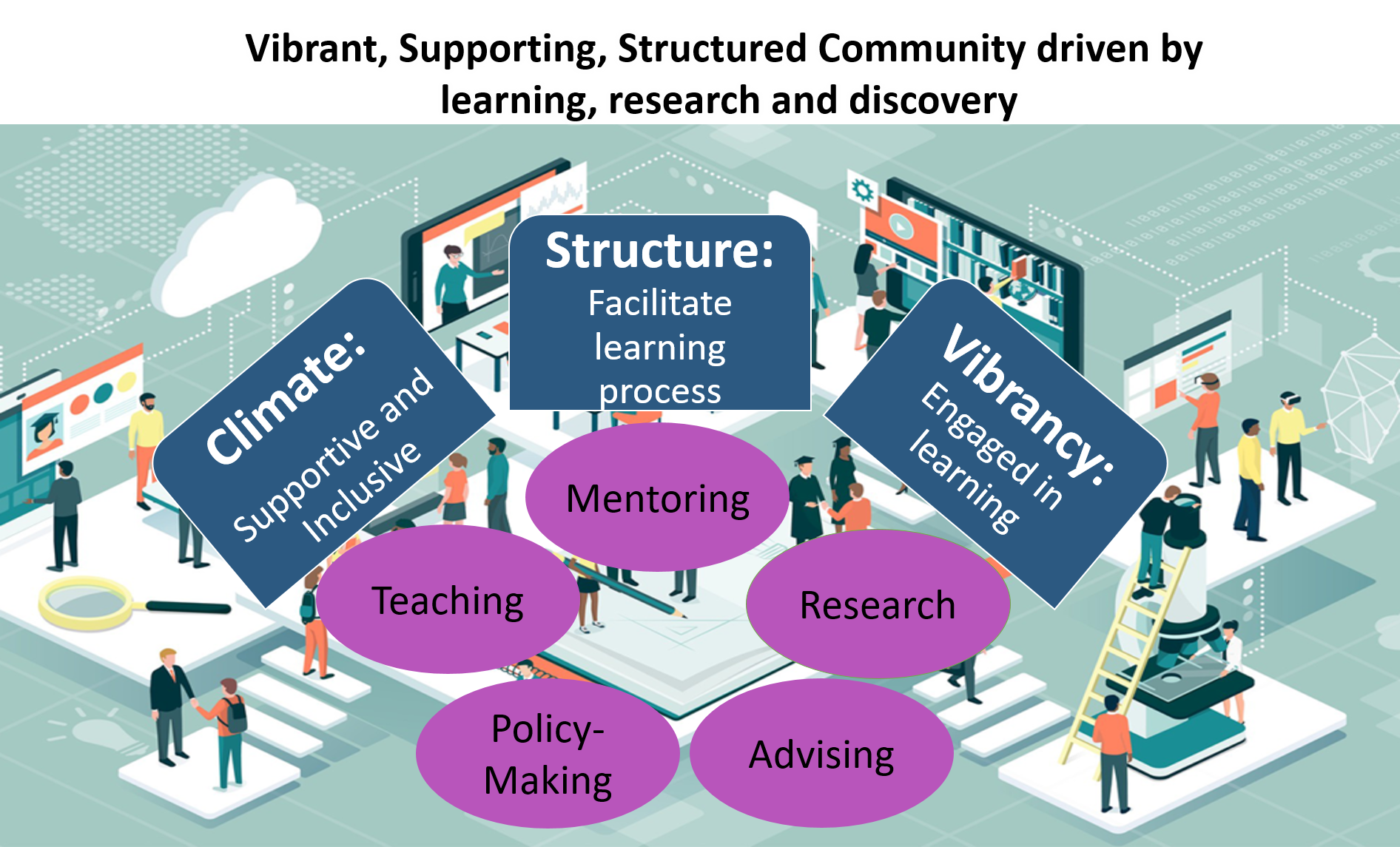The Eco-STEM project focuses on laying out the foundation for a learning community with supportive and inclusive climate, a structure that facilitates the learning process, and that is vibrant and engaged in learning.
Using an ecosystem as the philosophical guide will promote an organic and healthy environment that nurtures students, faculty, and staff to become individuals fulfilled professionally and personally.
- Research Questions:
- Enabling ecosystem models:To what extent do Eco-STEM project effectively enables the ecosystem model?
- Asset-based success: To what extent does transformation to an ecosystem model emphasize the assets of members of our community and result in enhanced motivation, excellence, and success of our students?
- Measuring thriving: Do new teaching assessment tools encourage a thriving ecosystem in which individuals experience growth and fulfillment?
- Data Sources:
- Qualitative
- Interviews with and reflections of ART Fellows and Leadership participating in the CoPs
- ART Fellows' research plans
- Quantitative
- Ecosystem health surveys of community members
- Retention and graduation data
- Peer-to-peer teaching observations and experience surveys of students in ART Fellows' classrooms
Eco-STEM Project Publications: All the publications generated by the Eco-STEM project team are available here.
